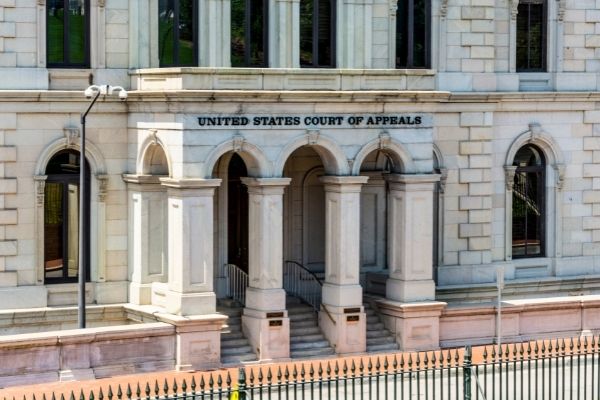Experienced Federal Appeal Attorneys: Knowledgeable Depiction for Facility Cases
Wiki Article
Debunking the Refine of Federal Appeals: What You Required to Know
Browsing the complex realm of government charms can commonly look like going across uncharted waters for those not familiar with the procedure. Understanding the nuances of appellate court jurisdiction, the complexities of submitting a notice of allure, providing a compelling short, and making an influential oral argument are crucial elements that can significantly affect the result of an instance. By unraveling the layers of complexity bordering government appeals, people can get a more clear insight into the mechanisms that control this critical stage of the legal system.Recognizing Federal Appeals Refine
Exploring the intricate realm of the federal allures procedure introduces a structured and methodical trip via the judicial system. Federal allures function as a crucial device for assessing decisions made by lower courts. Understanding this process is crucial for any individual associated with lawful process at the federal degree.The procedure typically starts with a celebration dissatisfied with a lower court's judgment submitting a notification of charm. This sets off a testimonial by a greater court, where a panel of judges assesses the lawful disagreements presented by both events. Briefs describing the lawful reasoning behind each party's position are sent, and oral disagreements may be heard to clarify intricate problems.
The appellate court's choice is based on a comprehensive exam of the reduced court's process and the debates presented. The judges do not concentrate but review realities on whether legal errors took place that affected the reduced court's choice. Once the appellate court reaches a choice, it can affirm, reverse, remand, or change the reduced court's ruling, offering clarity and finality to the legal disagreement. Recognizing this procedure is important for navigating the complexities of government allures properly.
Appellate Court Jurisdiction Discussed
As we advance from recognizing the federal charms process to studying the details of appellate court jurisdiction, an essential element emerges pertaining to the authority and limitations of these greater courts in the legal landscape. Appellate court jurisdiction refers to the scope of cases that a specific appellate court has the power to determine and assess upon. Unlike trial courts that hear cases for the very first time, appellate courts are limited to reviewing choices made by lower courts. These choices can include judgments from both state and government courts.Appellate courts have territory over details sorts of instances, usually those entailing legal mistakes, step-by-step issues, or concerns of regulation as opposed to accurate disagreements. The jurisdiction of appellate courts is normally laid out in statutes and legislations that control the court system. Understanding appellate court jurisdiction is critical for parties included in the charms procedure as it determines whether a case is qualified for review and the degree to which the appellate court can interfere in the reduced court's choice.
Filing a Notice of Appeal
The preliminary action in starting the government appeals process involves filing a Notice of Charm with the proper appellate court. This crucial document formally notifies the court and the other celebrations included in the situation that the appealing celebration means to look for a testimonial of the reduced court's choice. Submitting a Notification of Allure is a rigorous step-by-step need that establishes the appellate procedure in activity.
When preparing the Notification of Charm, it is important to make certain conformity with the certain policies and standards of the appropriate appellate court. federal appeal lawyers. The document must generally include details such as the instance name, the reduced court's name, the date of the judgment being appealed, and a concise statement showing the premises for the charm

Rundown and Dental Disagreement
In the appellate procedure, offering created briefs and involving in oral debates play critical functions in promoting for the appealing party's position prior to the appellate court. Briefs are detailed legal documents that describe the celebrations' click reference arguments, lawful authorities, and analysis supporting their settings. These created submissions provide the court with a comprehensive understanding of the facts of the case, the appropriate regulation, and why the appealing party believes the lower court's choice need to be overturned.Complying with the entry and testimonial of the briefs, dental arguments provide the celebrations a chance to more clarify their placements, address any type of concerns the appellate courts might have, and emphasize vital factors from their written briefs. Oral arguments are a chance for the attorneys to convince the judges with verbal advocacy and reactions to queries from the bench.
Both the composed briefs and dental disagreements are critical parts of the appellate procedure, permitting events to offer their instance extensively and compellingly prior to the appellate court. - federal appeal lawyers
Receiving the Appellate Court Choice
Upon conclusion of dental disagreements and submission of composed briefs, the next pivotal stage in the appellate process involves awaiting the crucial judgment from the appellate court. This period of anticipation can be filled with a mix of anxiety and wish for events associated with the charm. The appellate court's decision is generally delivered in a created style and details the court's conclusions on the legal concerns provided, the reasoning behind their choice, and the judgment made. The time structure for getting the appellate court's decision can vary, yet courts aim to provide prompt resolutions. When the decision is released, celebrations should carefully assess the court's ruling to understand the result and identify any kind of additional steps that might be required. Whether the appellate court attests, reverses, or remands the reduced court's decision, understanding the ramifications of the ruling is critical for all celebrations associated with the appellate process. Immediately evaluating and understanding the appellate court's decision is necessary in navigating the next actions in the legal procedures.Final Thought
In verdict, the federal appeals process is a complicated yet crucial action in seeking justice. Comprehending the appellate court territory, submitting a notification of allure, preparing briefs, and presenting oral arguments are all crucial parts of this procedure. Inevitably, receiving the appellate court decision can provide clarity and resolution to legal conflicts. It is necessary to browse the government charms procedure with persistance and interest to detail to accomplish a fair result.As we progress from recognizing the government charms process to exploring the complexities of appellate court jurisdiction, a fundamental facet comes to light pertaining to the authority and restrictions of these greater courts in the legal landscape. Appellate court jurisdiction refers to the extent of situations that a specific appellate court has the power to decide and assess upon. Unlike test courts that hear cases for the initial time, appellate courts are limited to evaluating decisions made by reduced courts. Comprehending appellate court jurisdiction is critical for events included in the charms procedure as it identifies whether a situation is eligible for testimonial and the extent to which the appellate court can interfere in the reduced court's decision.

Report this wiki page